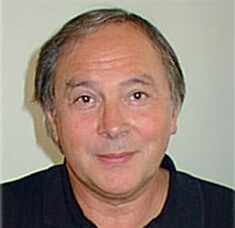Reporters Without Borders 21 September 2005

Paris Match reporter Jacques-Marie Bourget
“We are calling for the clarification of the circumstances of the shooting in which Bourget nearly died,” the organisation said. “He has been demanding justice for five years and it is high time that all the witnesses, without exception, are finally questioned by judicial investigators.”
French judge Michèle Ghanassia revived the case on 7 September 2005 by issuing a formal written request to the Israeli authorities to question the Israeli soldiers who witnessed the shooting, so that she can complete her investigation. On 16 September, court lawyer Jean Martin notified Ghanassia in writing of RSF’s civil party status in the case.
Bourget was shot in the chest as he was covering clashes between Palestinians and Israeli soldiers. He was rushed to a Ramallah hospital where he underwent a long operation after the Israeli authorities refused to authorise his transfer to a hospital in Jerusalem. The Israelis also blocked his evacuation to France until French President Jacques Chirac personally intervened.
The day after the shooting, Bourget was admitted to Beaujon hospital in France where doctors found that the bullet had done serious damage to his left lung, pierced his collarbone and three ribs and injured the left brachial plexus, causing paralysis to his left hand.
After the bullet was finally extracted on 29 June 2001, a ballistics examination established that it was Israeli-made and was fired from an M16 assault rifle, a firearm widely used by the Israeli army. This supported Bourget’s theory that he was deliberately targeted by an Israeli sniper. The fact that his interpreter, Abdel Hamid Khorti, was killed a few days after Bourget was shot also supported this theory, he argued.
Bourget filed a complaint with a high-level court in Paris in early 2002, claiming he had been the victim of a murder attempt. The counter-terrorist section (SAT) of the Paris criminal investigative police was put in charge of the investigation, in which many witnesses have stated that the shots came from Israeli positions.
Testimony of Jacques-Marie Bourget (Paris-Match) — Wounded by gunshot on 21 October 2000, in Ramallah
“It was October 21, 2000, around 4pm. I went with photographer Thierry Esch to Ramallah, to a place known as the Ayosh junction, where fighting regularly occurs between Palestinians and the Israeli army. We were standing with our backs against the wall of a villa, set back from the conflict that was taking place. We thought that there, we would be sheltered from gunfire. There were Palestinians and other journalists watching the events with us. Even though we thought we were outside of the firing zone, a bullet hit me right in the chest. I fell down and within a few minutes lost consciousness. An ambulance immediately arrived and took me to the Ramallah hospital. There, the Palestinian surgeons assessed my condition as too serious to operate on the spot. I would have to be taken to Jerusalem. I was losing a lot of blood. Outside, young Palestinians were lining up to give me their blood, as the news had spread quickly that a foreign journalist had been seriously injured. A transfusion of four liters would be needed. The French Consul in Jerusalem was notified. He arrived soon afterwards in Ramallah, with a French anesthetist, in an armored car.Even though it was an emergency, the Israeli authorities announced that they would not let the ambulance through to get to Jerusalem. They therefore had to operate in Ramallah, and the Palestinian surgeons, with the help of Doctor Desmante from Médecins du monde, performed a miracle. It was then decided that I should be repatriated to France. Once again, the Israelis refused to authorize the ambulance access to the Ben Gourion airport in Tel-Aviv. President Chirac had to personally intercede in order for the Israeli authorities, on the Sunday night, to give permission for the ambulance to leave Ramallah. Arriving at the Ben Gurion airport, the Israeli authorities refused to let the ambulance onto the tarmac. Negotiations were required yet again.
On the morning of Monday 22 October, I arrived in Paris. I was admitted, once again in a critical state, to the pneumology unit at the Beaujon hospital. The diagnosis: my left lung was seriously effected. The bullet had caused a fracture of the collarbone, the shoulder blade and three ribs, as well as a left brachial plexus injury that was causing paralysis of the left hand, the bursting of the subclavian artery having caused hemorrhaging. I was to spend a month in hospital - including ten days in intensive care - then a month in rehabilitation at a specialized center, and I am still undergoing treatment today. The doctors told me that I would have to wait another few months before they could make a decision about a possible graft of the brachial plexus and they still do not know what the after-effects for my hand will be, those of my lung being irreversible. On June 29, 2001, the bullet was removed. According to the ballistics expert, the projectile was fired from an M16 assault rifle, a weapon that is used by Israeli soldiers. In my opinion, there was a deliberate intention to kill me. Ten months later, I have still not received the results of the investigation carried out by the Israelis.”
More Information
Related Links
Occupied Territories From September 2000 (PDF) RSF (August 2001)